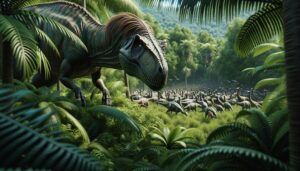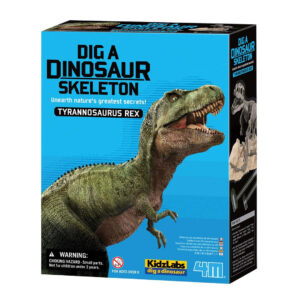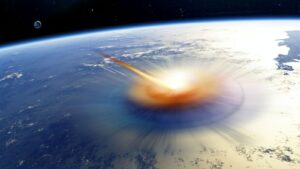Can Fossilized Dinosaur Eggs Hatch
Is the idea of a fossilized dinosaur egg hatching into a live dinosaur more than just a scene from a science fiction movie? The notion captures the imagination, but science offers a grounded perspective on the fossilization process, which turns biological material into stone over millions of years.
Exploring the journey from a once-organic egg to its current state as a fossil reveals much about our planet's history and the creatures that once roamed it. Unraveling this mystery not only enlightens one about the past but also challenges the boundary between the lost world of dinosaurs and today's scientific capabilities.
Key Takeaways
- Hatching dinosaur eggs from fossils is scientifically impossible due to fossilization turning organic material into stone.
- Lack of viable DNA in fossilized eggs prevents any cloning or resurrection efforts.
- The specific hatching conditions required for dinosaur eggs cannot be replicated today.
- The idea of reviving dinosaurs from petrified eggs remains a fantasy, not grounded in scientific reality.
Understanding Dinosaur Fossils
To accurately grasp the concept of fossilized dinosaur eggs, it's essential first to understand that dinosaur fossils, often embedded within the earth's stratified layers, serve as a window into the prehistoric past. These remnants, preserved through geological processes, offer invaluable insights into the life and extinction of dinosaurs.
Scholars analyze the composition, structure, and positioning of these fossils to reconstruct ancient ecosystems, dietary habits, and evolutionary pathways. Dinosaur eggs, in particular, provide a unique perspective on reproductive behavior and developmental stages. By examining the size, shell thickness, and contents of these eggs, researchers can infer the species' nesting practices and growth rates.
This foundational knowledge is critical for interpreting the broader implications of fossilized dinosaur eggs within paleontological studies.
The Fossilization Process
Understanding the nuances of fossilized dinosaur eggs necessitates an exploration of the fossilization process. This process begins when an egg, post-burial under sediment, experiences mineral-rich water percolating through its porous shell. Over millennia, minerals replace the organic egg components, cell by cell, in a meticulous process called permineralization. This preserves the egg's intricate structure in stone.
Key to this preservation is the immediate burial of the egg, which shields it from decay and scavengers. Throughout this transformative journey, the original organic substances are lost, leaving behind a mineralogical doppelgänger of the once-viable egg. This intricate preservation mechanism gives scientists invaluable insights into ancient life, capturing the embryonic stage of dinosaurs in perpetuity.
Dinosaur Eggs Through Time
As we trace the journey of dinosaur eggs through the eons, it becomes evident that these calcified time capsules offer a window into the prehistoric world, revealing the evolutionary adaptations and environmental conditions that shaped the era of the dinosaurs. These eggs, varying in size, shape, and texture, provide critical insights into the nesting behaviors and reproductive strategies of dinosaurs, embryonic development and growth rates within the egg, the biodiversity and ecological niches of ancient ecosystems, and climatic conditions and their impact on dinosaur survival and reproduction.
This analysis allows researchers to reconstruct the life histories and environmental pressures faced by these magnificent creatures. It underscores the complexity of evolutionary processes, highlighting how adaptations to a changing world were as crucial for the survival of dinosaurs as they're for species today.
The Science of Hatching
While the enchanting prospect of bringing ancient creatures to life captivates the imagination, the scientific feasibility of hatching fossilized dinosaur eggs encounters insurmountable biological and temporal barriers.
Embryonic development in eggs, whether of dinosaurs or modern birds, necessitates specific conditions—temperature, humidity, and gas exchange—that are meticulously regulated by the parent or the environment. Over millions of years, the organic components within dinosaur eggs have mineralized, transforming into rock. This process, known as permineralization, replaces organic materials with minerals, erasing any biological structures essential for development.
Furthermore, DNA, the blueprint for life, degrades over time. Even in optimal preservation conditions, DNA's half-life ensures that sufficient genetic material for resurrection doesn't survive beyond a few hundred thousand years, far short of the millions since dinosaurs roamed the Earth.
Debunking the Myth
Despite the allure of resurrecting ancient behemoths, the notion that fossilized dinosaur eggs could hatch is founded on misconceptions and scientific inaccuracies. Fossilization, the process by which organic material is replaced by minerals, renders any biological remnants inert. Key points debunking the myth include:
- Fossilization Process: Converts organic material into stone, eliminating any genetic material.
- Millions of Years: The age of dinosaur eggs ensures any organic compounds have long since degraded.
- Lack of Viable DNA: Without genetic material, no cloning or resurrection is scientifically feasible.
- Environmental Conditions: The specific conditions necessary for hatching are impossible to replicate.
Understanding these factors clarifies why, despite intriguing possibilities presented in fiction, hatching dinosaur eggs from fossils remains squarely in the realm of the impossible.
Reality Versus Fantasy
In exploring the boundary between reality and fantasy, it's crucial to recognize that the fascination with hatching fossilized dinosaur eggs stems more from pop culture narratives than scientific possibility.
This dichotomy highlights the intricate dance between what's scientifically verifiable and the imaginative realms constructed by human creativity. Fossilization, by its nature, replaces organic materials with minerals, rendering any biological remnants non-viable.
Thus, the notion of reviving dinosaurs from petrified eggs falls squarely in the realm of fantasy. This distinction serves not to diminish the value of imagination but to underscore the importance of grounding discussions in empirical evidence.
As such, while the idea captivates the public's imagination, it remains a vivid illustration of fantasy outpacing the realities of paleontological science.
Conclusion
Ironically, while the allure of hatching fossilized dinosaur eggs captivates many, the stark reality firmly grounds these fantasies.
Despite the sophisticated understanding of dinosaur fossils and the intricate process of fossilization, the notion of reviving these ancient creatures remains firmly within the realm of fiction.
The science of hatching, rigorously analyzed, reveals an insurmountable gap between the fossilized remains and the once-living organisms.
Thus, the myth, though enchantingly whimsical, is debunked by the unyielding facts of paleontology.




